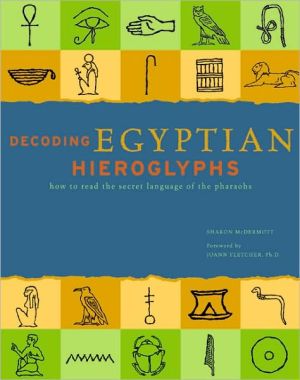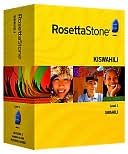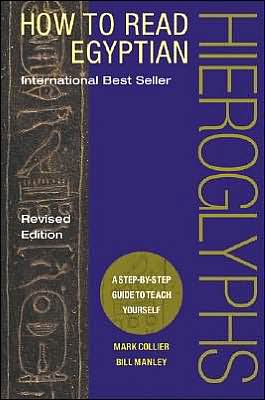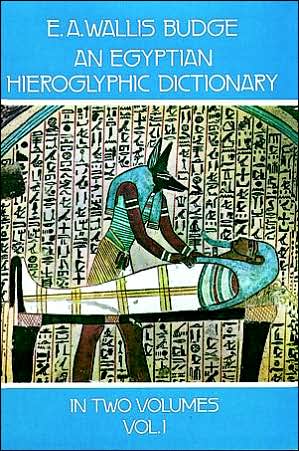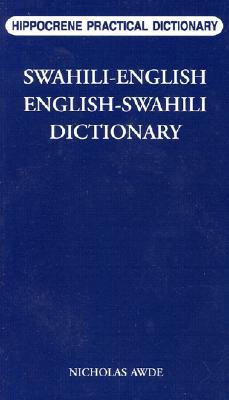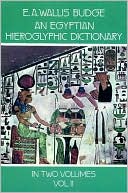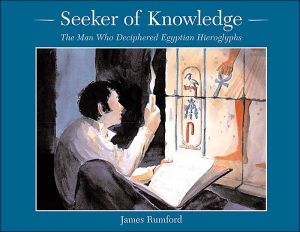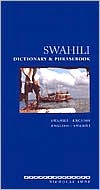Decoding Egyptian Hieroglyphs: How to Read the Secret Language of the Pharaohs
For beginners and Egyptologists alike, reading hieroglyphs provides fascinating insights into the land and lore of the pyramids. Decoding Egyptian Hieroglyphs is the only fully illustrated, easy-to-use guide to the meaning and mystery behind this ancient language. A history of hieroglyphs and instructions for how to read them are complemented by vocabulary lists and photographs of real inscriptions. In each chapter, skill-building exercises weave together with details of Egyptian life. Who...
Search in google:
For beginners and Egyptologists alike, reading hieroglyphs provides fascinating insights into the land and lore of the pyramids. Decoding Egyptian Hieroglyphs is the only fully illustrated, easy-to-use guide to the meaning and mystery behind this ancient language. A history of hieroglyphs and instructions for how to read them are complemented by vocabulary lists and photographs of real inscriptions. In each chapter, skill-building exercises weave together with details of Egyptian life. Who could have imagined that the sign for the word "millions" is a lizard because Egypt was once overrun with reptiles? Hieroglyphs literally paint portraits of the ancients, depicting everyone from the pharaoh in his court to the farmer along the flooded Nile. Decoding Egyptian Hieroglyphs reveals the beauty and hidden marvels of one of the world's most intriguing cultures. Publishers Weekly The French linguist who decoded the Rosetta Stone took 14 years to do so; amateur translators would find the task much simpler with Decoding Egyptian Hieroglyphs: How to Read the Secret Language of the Pharaohs by British doctoral student Bridget McDermott. For instance: "a water pot on a human leg, a bread loaf and a flesh sign together" means "meat." The colorful text, a marriage between coffee-table picture book and high school language workbook, offers photographs of ancient inscriptions with sidebars clarifying their meaning as well as pronunciation and grammar guides, magic spells, maps, mythology and basic Egyptian history. Copyright 2001 Cahners Business Information.
\ \ Chapter One\ \ \ DISCOVERY & DECIPHERMENT\ \ \ In 1799 a French officer at Fort Julien in el-Rashîd in Egypt uncovered a\ granitic rock carved with three scripts: hieroglyphs, demotic or popular\ Egyptian, and ancient Greek. The slab was the key to deciphering hieroglyphs.\ \ \ \ THE ROSETTA STONE\ \ \ The officer was a member of a French\ expeditionary force to Egypt, and copies\ of the inscription on the slab — later\ called the Rosetta Stone after European\ versions of el- Rashîd — were sent to Paris.\ By examining the Greek text on the slab,\ scholars saw that the carving commemorated\ the coronation of Ptolemy V and had\ been commissioned by priests of\ Memphis in 196BCE. But it was years\ before the fourteen lines of Egyptian\ hieroglyphs were deciphered.\ \ Jean-François Champollion, a precocious\ French linguist, obtained a copy of\ the Rosetta Stone inscription in 1808\ when he was only eighteen. Fluent in\ ancient Greek, he compared the hieroglyphs\ in oval enclosures — which were\ believed to contain royal names — to the\ royal names listed in the Greek section of\ the inscription. Other scholars had identified\ Ptolemy in Greek and Egyptian.\ Champollion assumed that the name\ should be read alphabetically and that\ each hieroglyph represented a separate\ letter, and by reading from right to left\ established the name p-t-o-l-m-y-s. He\ was able to draw up a small alphabet.\ \ When he saw a copy of an inscription\ containing the name Cleopatra, he made\ a longer sign list that enabled him to read\ names on other monuments. He realized\ that hieroglyphs used signs that represented\ both sounds and ideas and he\ examined the grammar of the language,\ making his findings public in 1822.\ \ \ \ THE HISTORY OF THE LANGUAGE\ \ \ Around 3000BCE developments in trade\ brought about crosscultural relationships\ between Egypt, Mesopotamia and neighbouring\ countries. The Sumerians of\ Mesopotamia had developed a system of\ writing that used pictograms or picture\ signs and for many years scholars\ believed that this system was the basis of\ Egyptian writing. Recent excavations at\ Abydos, however, have revealed that\ Egypt had used a pictorial language several\ hundred years before Mesopotamia.\ \ The oldest surviving examples of written\ Egyptian date from c.3250BCE. At first\ the pictorial script was used primarily to\ record royal possessions but by the Old\ Kingdom (2625-2130BCE) the script\ appeared mainly in religious or commemorative\ inscriptions on palaces,\ temples and tombs, on statues, coffins\ and sarcophagi and on amulets and jewelry.\ For this reason the Greeks who ruled\ Egypt after the death of Alexander the\ Great in 323BCE called the writing "hieroglyphics"\ from the Greek words hieros\ (meaning "sacred") and gluphe ("carving").\ Hieroglyphic writing was in use for\ more than 3,000 years from the fourth\ millennium BCE to the fourth century of\ the Christian era, when — in a Roman-dominated\ Egypt — it faded into obscurity.\ The latest known inscriptions in\ hieroglyphs date from 24 August 394CE\ and were discovered on the island of\ Philae in the River Nile in southern\ Egypt, where a temple to the goddess Isis\ was still in use in the sixth century CE.\ \ Hieroglyphic signs were written in\ columns and rows and read from right to\ left, from left to right or from top to bottom\ — but never from bottom to top (see\ page 19). A simplified form of hieroglyphic\ writing probably first appeared\ shortly after the introduction of the original\ hieroglyphs. In the Old Kingdom this\ simplified form was used for secular\ administrative papyri as well as for temple\ accounts and religious texts. In the\ Greco-Roman period (332BCE-CE395),\ however, it was used only by priests and\ in religious contexts — the Greeks named\ it "hieratic", from hieratikos ("priestly").\ Scribes wrote hieratic in columns and\ rows; in rows it read from right to left.\ \ A more rapid form of writing — best\ described as a shorthand used for administrative\ documents — first appeared in\ 724-712BCE and continued in use until the\ late Roman period (fourth century CE).\ The Egyptians identified it by a phrase\ meaning "writing of documents", but it is\ widely known as "demotic" from the\ Greek demotikos ("popular"), because it\ was used in secular writing.\ \ A fourth form of written Egyptian was\ Coptic. This was written in the Greek\ alphabet but retained seven characters\ from the ancient Egyptian language.\ While earlier forms of Egyptian used only\ consonants in their alphabets (see pages\ 22-23), Coptic used vowels as well and\ has helped scholars reconstruct the vowel\ sounds of hieroglyphic writing. The earliest\ Coptic texts, which date from the first\ and second centuries CE, were Egyptian\ magical writings. The name comes from\ the Greek Aiguptia, "Egypt". After the\ Arab conquest of Egypt in 640-642CE,\ Arabic largely replaced Coptic in Egypt.\ \ The language of Egypt is divided by\ historians into Old, Middle and Late\ Egyptian. Old Egyptian is dated to\ 3180-2240BCE and was used in official,\ funerary and biographical inscriptions.\ Middle Egyptian (2240-1990BCE) was\ developed in literary compositions of the\ Middle Kingdom and continued in use\ well into the Eighteenth Dynasty (1539-1292BCE).\ Because it is grammatically\ consistent, Middle Egyptian is the best\ place to start when learning to read\ hieroglyphs. Late Egyptian, dating to\ 1573-715BCE, is found in official documents,\ inscriptions and letters.\ \ \ \ THE SCRIBAL LEGACY\ \ \ In ancient Egypt, those able to read or write the elaborate hieroglyphic\ script were held in great esteem, and often became prominent figures in\ the religious, military or political realms. Literacy was limited to members of\ the élite. Highly trained scribes used hieroglyphs to facilitate the administration\ of the state and to document political and religious events.\ \ \ \ THE ROLE OF THE SCRIBE\ \ \ From the age of seven, boys from Egypt's\ upper classes attended school at temple,\ where they practised their writing on\ ostraca (fragments of pottery or limestone)\ or on wooden writing boards that\ were coated with gypsum. Pupils probably\ also learned words and phrases by heart\ by chanting them. Boys are also known to\ have studied literary compositions\ including stories and wisdom texts.\ \ It is thought that Egyptian further\ education began between the ages of thirteen\ and fifteen, when students were\ expected to embark on an apprenticeship.\ Among the many trades open to\ educated young men, the military and\ scribal professions were particularly\ highly regarded. Those who chose to\ become scribes enjoyed promising\ prospects — qualified scribes could expect\ to graduate to prestigious administrative\ positions in a range of sectors. Military\ scribes were responsible for recruiting\ and organizing the army and its supplies.\ Some scribes acted as architects, while\ others designed the plans for decorating\ royal tombs and temples with hieroglyphs\ and pictures, and supervised the artists\ and craftsmen who carried the plans out.\ \ Individual scribes, even if they came\ from relatively humble backgrounds,\ were sometimes promoted to positions of\ high office. Imhotep, the scribe and\ architect of the step pyramid at Saqqara,\ was even worshipped as a god after his\ death, as was another famous scribe,\ Amenhotep son of Hapu (see page 17).\ \ The ancient Egyptians revered literacy,\ and even élite men who were not\ scribes sometimes commissioned statues\ of themselves kneeling crosslegged on\ the ground in the pose that characterized\ the profession. The scribe is usually\ depicted with rolls of writing material\ stretched across his knees. The Egyptians\ wrote on bone, clay, ivory, linen, metal\ and vellum, but ostraca and papyrus were\ more widely used. Scribes selected small\ rectangular sections or rolls of papyrus,\ which were several metres in length.\ Egyptian books, in the form of scrolls,\ were usually stored in boxes or jars.\ \ The hieroglyphic word for "scribe"\ ?? ss/sesh (see pages 20-23 for transliteration\ and pronunciation of hieroglyphs)\ starts with an image of the scribal\ palette and tools; the determinative sign\ (see page 24) is a kneeling male figure\ that represents a scribe at work. The\ scribal palette consisted of black and red\ inks that were used to distinguish\ between sections of text. The black pigment\ was derived from carbon, while the\ red was extracted from two types of iron\ oxide and ochre. Both pigments were\ moulded into small cakes which were\ mixed with gum and water. Pens and\ brushes were crafted from the firm,\ straight stems of reeds or from slivers of\ wood which were bruised at one end until\ the fibres separated and formed bristles.\ The word "to write" ?? ss/sesh is almost\ identical to the word for "scribe", and was\ pronounced in the same way. It shows the\ scribal palette and pen followed by the\ image of a sealed papyrus roll.\ \ \ \ HOW HIEROGLYPHS WORK\ \ \ For centuries hieroglyphs were an unbreakable code because scholars\ were misled by the ancient Egyptians' use of symbols in writing. To break\ the code modern readers had to understand — as Jean-François Champollion\ did — that the symbols represent both sounds and ideas (see page 20). The\ first step of all, however, is to examine how scribes arranged the hieroglyphs.\ \ \ \ THE ARRANGEMENT OF SIGNS\ \ \ Ancient Egyptian scribes wrote hieroglyphs\ in both rows and columns with no\ spaces between the words. Inscriptions\ can be read from left to right or from right\ to left along a row and in a column from\ top to bottom.\ \ When reading a row you can work out\ in which direction to read because signs\ containing humans, animals or birds\ always face toward the beginning of the\ inscription. For example, when the word\ for "drink" is written like this ??\ it should be read from the left because the\ human figure and the bird are facing\ toward the left. If it is written in this way\ ?? it is read from the right.\ \ When a row of hieroglyphs appears\ vertically reading should begin at the top,\ for hieroglyphs were never written from\ the bottom to the top of a column. Within\ a row if two signs are put together vertically — as\ the bird and the mouth sign are\ in "drink" — the upper one should be read\ first. The signs in "drink" should therefore\ be read in this order ?? (folded cloth)\ ?? (sparrow), ?? (mouth), ?? (reed),\ ?? (water ripples) and ?? (man).\ \ The signs reproduced in this book are\ printed as we are accustomed to read\ English — in a straight line from left to\ right. However, scribes used hieroglyphs\ as part of the decorative scheme of the\ monument, tomb or other object on\ which they were writing, often arranging\ the signs in the way most pleasing to the\ eye. When carving an inscription on a\ monument, they would group the signs to\ fill the space available. Sometimes they\ repeated pieces of text in opposing directions\ for symmetrical effect.\ \ \ \ SPELLING AND PRONUNCIATION\ \ \ Before Jean-François Champollion made\ his inspired breakthrough in the decoding\ of hieroglyphs (see page 11), scholars\ believed that all hieroglyphic symbols\ stood for concepts or things and that\ none was used to represent sounds in the\ way that the letters of the English alphabet\ are used. In fact hieroglyphic writing,\ as Champollion understood, combines\ ideograms (signs that represent ideas and\ things) and phonograms (signs that represent\ sounds).\ \ Many signs depict recognizable creatures\ or things — for example, ?? (bull),\ ?? (horse) or ?? (child). Many depict\ stylized versions of the thing to which\ they refer, as in ?? (lotus pool), ??\ (lotus flower) or ?? (palm branch stripped\ of leaves). Sometimes a sign is used as the\ word for the object it depicts. For\ instance, the word for "mouth" ?? consists\ of the mouth sign written with a single\ stroke that indicates, among other\ things, that this word refers to the thing\ that is represented. Similarly the words\ for "sun" ?? and "arm" ?? are written\ with the signs that represent those\ objects. More usually, however, hieroglyphic\ signs represent sounds in the\ Egyptian language — they are used as\ phonograms. Two picture signs representing\ different sounds can be put\ together to make a new word, which often\ has nothing to do with the things represented\ by the picture signs themselves. A\ hypothetical English equivalent usually\ quoted by scholars would be to write\ "belief" by combining the images of a bee\ and a tree's leaf: bee-leaf. If you were trying\ to decode this hypothetical English\ hieroglyph and expected the resulting\ word to relate to bees, leaves, honey or\ trees, you would be heading in entirely\ the wrong direction.\ \ By careful comparison of the use of\ hieroglyphic signs in different contexts,\ scholars have identified specific signs\ with individual sounds. Where possible\ they have matched these sounds with the\ letters of the English alphabet. But some\ sounds in ancient Egyptian do not have\ exact equivalents in English and so cannot\ be represented using letters of the\ alphabet; in these cases scholars have\ developed a set of signs to represent the\ sounds (see pages 22-23). The translation\ of hieroglyphic pictures into sounds\ is called "transliteration". Ancient\ Egyptian hieroglyphs did not represent\ vowel sounds (a,e,i,o,u) and so only consonants\ are used in transliteration.\ \ In the word for "house" ?? the rectangle\ represents a house; the pronunciation\ of the word combined the consonant\ sounds p and r — and the sign is\ transliterated using those letters: pr. The\ word for "to go forth" ?? made the same\ sound combination. In this context the\ sign of the house works to represent the\ sound combination pr(i); the mouth sign\ reinforces this, because it represents the\ sound r; the sign for walking legs helps to\ distinguish between the house symbol\ used as an ideogram in ?? and the same\ symbol used as a phonogram in "to go\ forth" — the leg sign indicates that the\ word is to do with movement and is an\ example of a determinative (see page 24).\ \ Scholars do not know for certain how\ the ancient Egyptians pronounced the\ words represented by hieroglyphs, but\ they have a good idea based on comparative\ research in Coptic (see page 13). As\ well as transliterating hieroglyphic signs\ into recognizable letters (but using only\ consonants), we can write out the word's\ probable pronunciation complete with\ vowel sounds. The word house ??,\ transliterated pr, was probably pronounced\ "pair". In this book the hieroglyphic\ words cited are followed firstly by\ the transliteration, then the pronunciation,\ thus: "house" ?? pr/pair; "mistress\ of the house" ?? ?? nbt-pr/nebet -pair; the\ ancient name for Egypt ("the black land")\ ?? ?? ?? kmt/Kemet.\ \ \ \ THE ALPHABET\ \ \ Ancient Egyptian used a standard alphabet\ of twenty-four "letters" each of which\ represented a single consonant. The letters\ are shown in the box below alongside\ their transliteration (see pages 20-21) — either\ a letter from the English alphabet\ or a transliteration sign devised by scholars\ — and their probable pronunciation.\ \ The sounds represented by the\ transliteration signs given in the alphabet\ box below are as follows: 3 — glottal stop,\ similar to "thro'le" (for "throttle") in\ Cockney English; i — like "y"; ?? — guttural\ "ah" sound; h — emphatic "h"; h — similar\ to "ch" in Scottish "loch"; h — similar\ to "ch" in German "ich"; — "sh"\ as in "shimmy"; k — "kw" like "q" in\ "queen"; t — similar to to "t" in "tube"; d\ -"dj" similar to "j" in "joker".\ \ The language also used a number of\ signs that represented combinations of\ two consonants (these are known as\ "biliteral signs") or combinations of\ three consonants (known as "triliteral\ signs"). A list of biliteral signs and a\ selection of triliteral signs is given on\ pages 158-9 in the Reference File section\ at the end of this book.\ \ \ \ DETERMINATIVES\ \ \ Two English words can sound identical\ but have different meanings — for example,\ "pear" and "pair". In hieroglyphs,\ where no vowels were written, words\ commonly shared a spelling. The adjective\ ?? "old" and the noun ??\ "praise" both read i3w/ah-oo. When\ words looked alike in this way, Egyptian\ scribes added what scholars call determinatives\ — ideograms used to determine or\ make clear the meaning. The determinative\ for ?? "old" is a stooping, elderly\ man while the determinative for "praise"\ is a figure raising hands in worship.\ Determinatives do not have a phonetic\ function — they represent no sound.\ Ideograms of a man ?? or parts of the\ male anatomy including the penis ??\ and ?? were used to determine words\ with male aspects: for example, ??\ s3/sar "son" and ?? h3y/hay "husband".\ Ideograms of a woman ?? were\ used to determine words with female\ aspects such as ?? mwt/moot "mother".\
Foreword6Chapter 1First Steps8Discovery and Decipherment10The Rosetta Stone11The History of the Language12The Scribal Legacy14The Role of the Scribe15How Hieroglyphs Work18The Arrangement of Signs19Spelling and Pronunciation20The Alphabet22Determinatives24Chapter 2Origins of the Signs26Signs from Nature28On the Banks of the Nile28Bodies Human and Divine30The Animal World34Hosts of the Air36Reeds and Flowers38The Divine Elements of Life41Life on Earth44Dwellings of Men and Gods45The Harvest of the Fields50Eating and Drinking53Recreation and Sport56Chapter 3The Sacred Art Of Writing58The Magical Dimension60Worship of the Gods60The Art of Magic64Tomb Inscriptions66Reading a Tomb Inscription68The Pyramid Texts70Coffin Texts72The Book of the Dead74How to Read Objects76Statues76Jewelry78Weapons of War80The Power of Names82The King's Titles82Gods and Goddesses86Reading a Temple Inscription90Chapter 4Realms of Meaning92A Healthy Life94The Body Beautiful94The Healing Arts96Death and the Afterlife98Relationships104Generations104Expressing Emotions106Love and Family Life108Trades and Skills110Mining111Servants of the Gods112Servants of the State115A Life of Work118Soldiers120Weapons and War122The Force of Egypt122Military Records124Egypt and Beyond126The Black Land126The Forty-Two Nomes128Sacred Sites130Peoples Beyond the Black Land134Calculation and Measurement138Time138The Seasons of the Year140Mathematics142Celestial Worlds144Creation Myths145Day and Night146The Waters of Heaven148Chapter 5Reference File150The Grammar of Hieroglyphs152Sample Translations160Sign Index166Index172Acknowledgments176
\ Publishers WeeklyThe French linguist who decoded the Rosetta Stone took 14 years to do so; amateur translators would find the task much simpler with Decoding Egyptian Hieroglyphs: How to Read the Secret Language of the Pharaohs by British doctoral student Bridget McDermott. For instance: "a water pot on a human leg, a bread loaf and a flesh sign together" means "meat." The colorful text, a marriage between coffee-table picture book and high school language workbook, offers photographs of ancient inscriptions with sidebars clarifying their meaning as well as pronunciation and grammar guides, magic spells, maps, mythology and basic Egyptian history. Copyright 2001 Cahners Business Information.\ \ \ \ \ Library JournalA media consultant on Egyptian archaeology currently working on her doctoral thesis, McDermott offers the reader a delightfully illustrated introduction to ancient Egyptian hieroglyphic writing. Egyptian hieroglyphs are not simple pictographs; they form a phonetic writing system, so some knowledge of grammar and vocabulary is essential to deciphering the texts. The author introduces common signs and words in the context of various aspects of Egyptian culture, treating first their origin and then their use as either sounds or determinatives for meaning. The book concludes with a brief overview of the basic grammar of Middle Egyptian (the classical stage of the language), along with a selection of sample translations, a sign index, and a select bibliography. This treatment may be sufficient for those who simply want to understand how hieroglyphics work, but for readers who wish to learn Middle Egyptian, Mark Collier and Bill Manley's How To Read Egyptian Hieroglyphs: A Step-by-Step Guide To Teach Yourself (LJ 9/1/98) provides a more succinct and practical introduction. For a more intensive approach, J.P. Allen's Middle Egyptian: An Introduction to the Language & Culture of Hieroglyphs (Cambridge Univ., 2000) will prove useful.-Edward K. Werner, St. Lucie Cty. Lib. Syst., Ft. Pierce, FL Copyright 2002 Cahners Business Information.\ \
